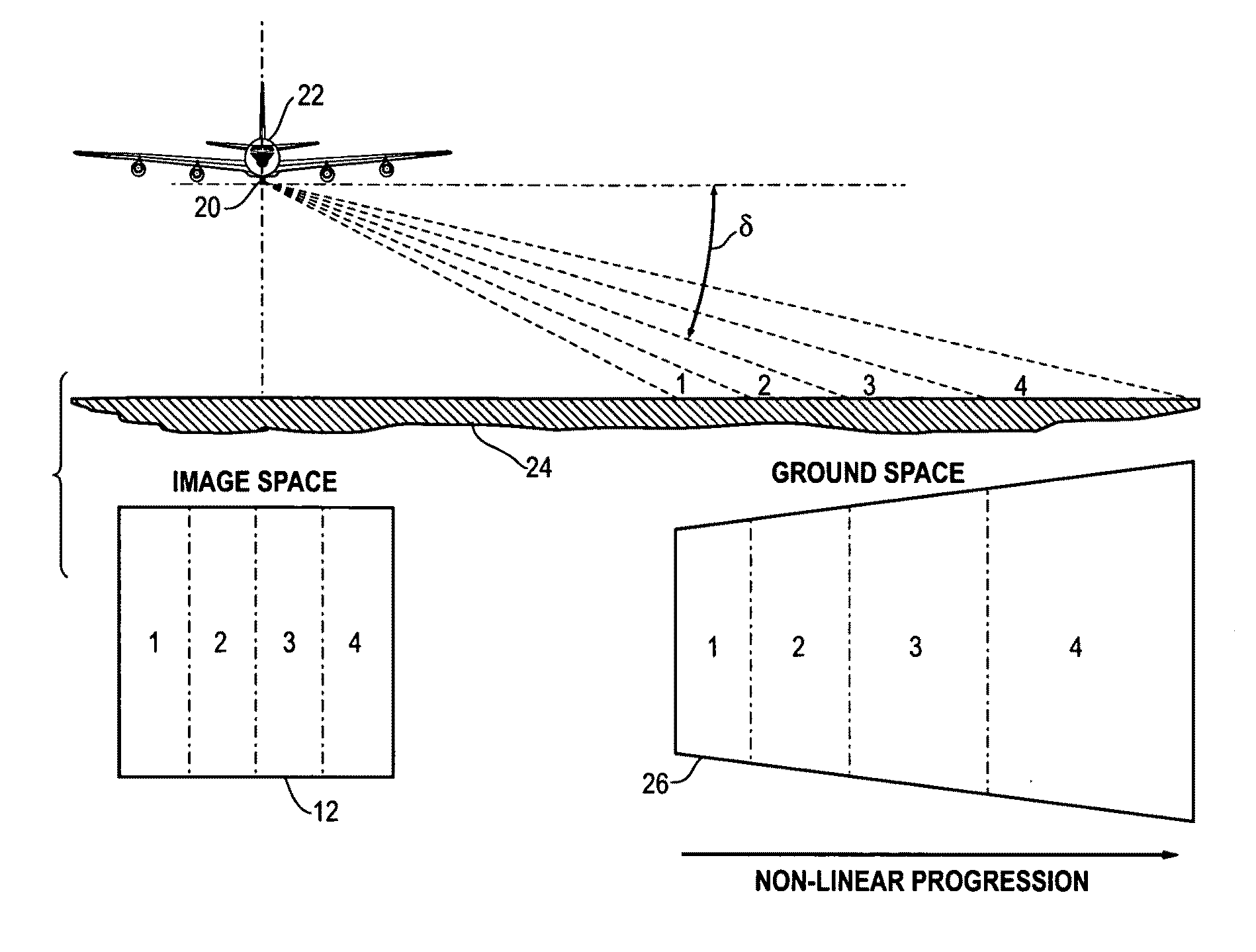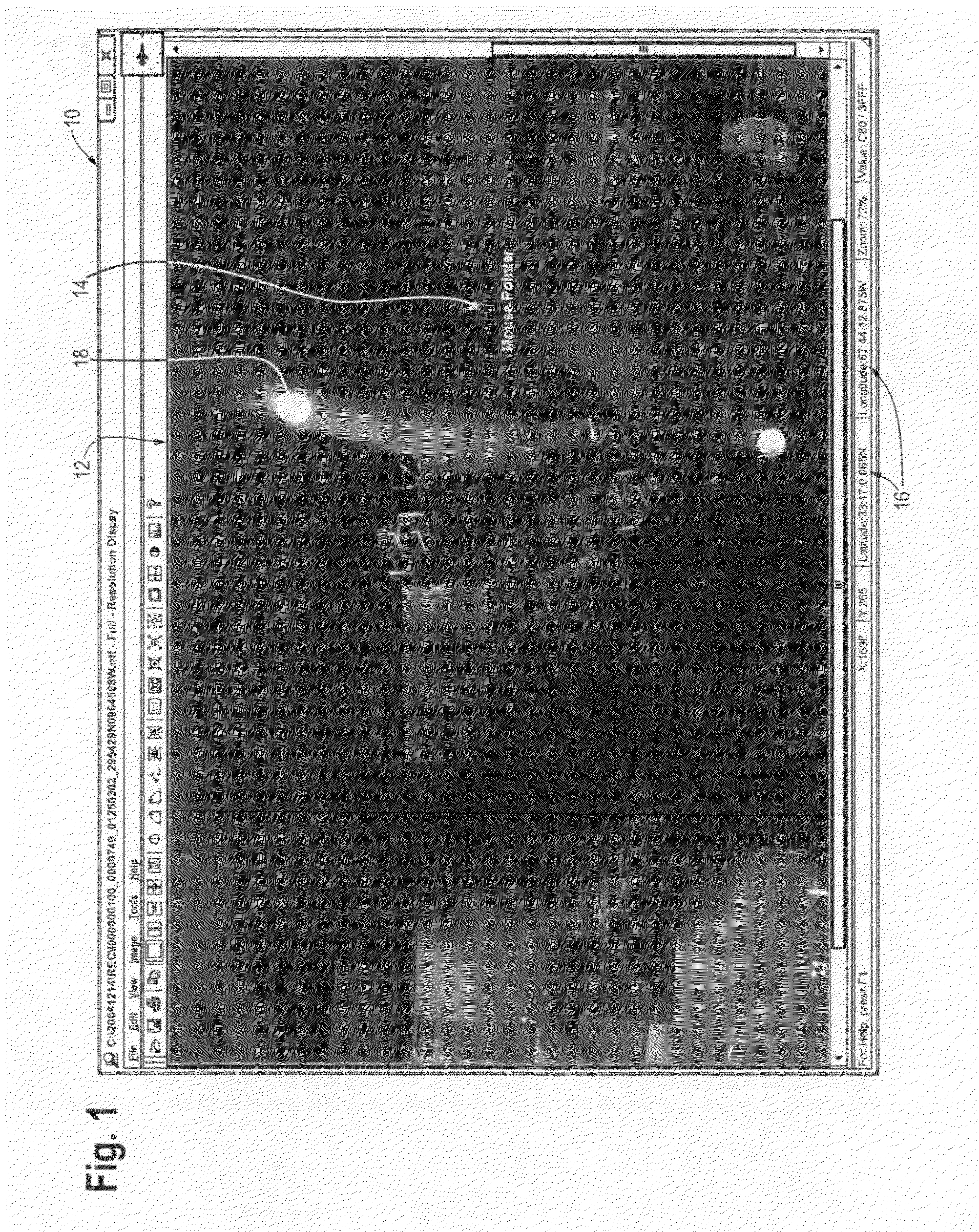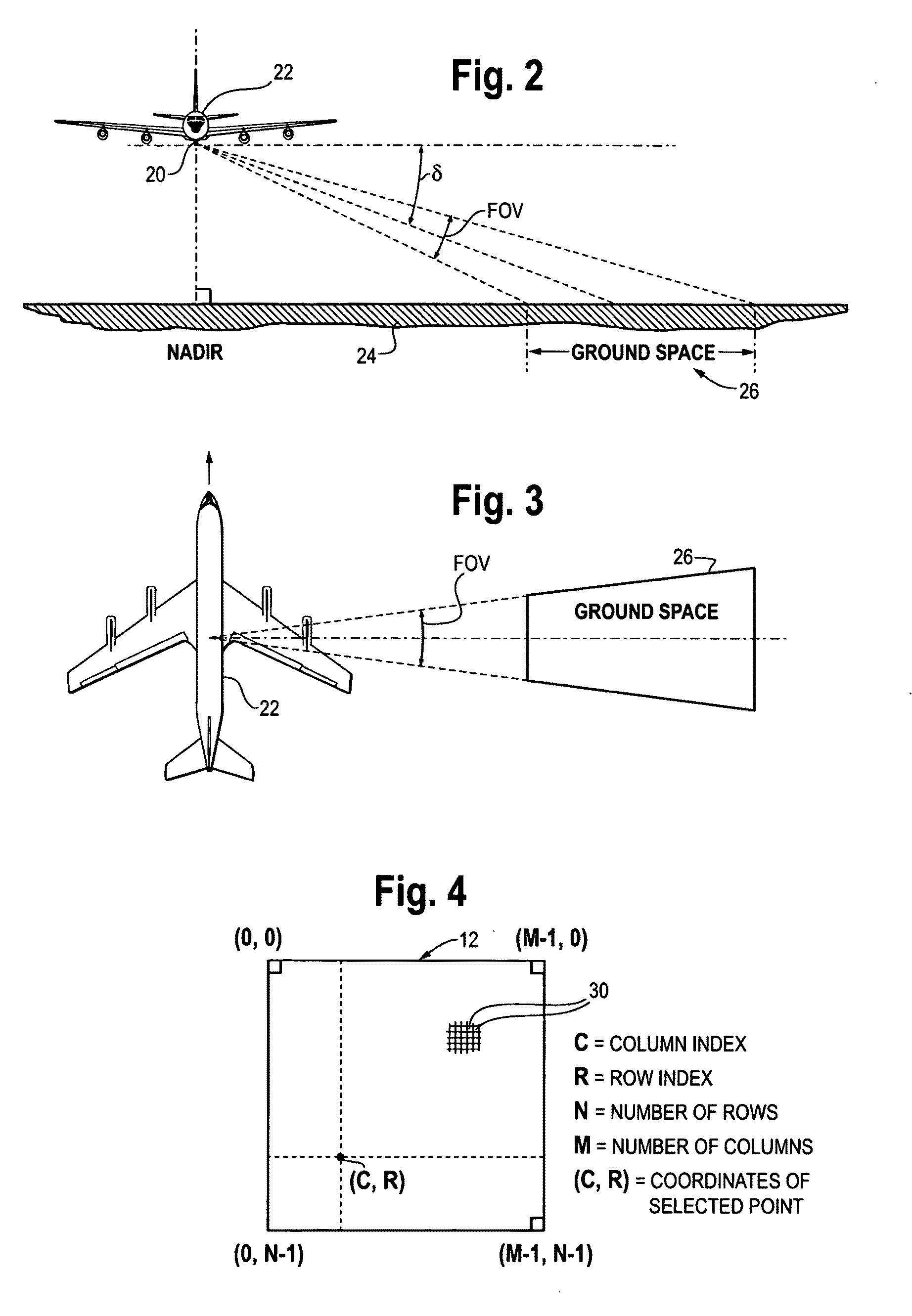Method of object location in airborne imagery using recursive quad space image processing
- Summary
- Abstract
- Description
- Claims
- Application Information
AI Technical Summary
Benefits of technology
Problems solved by technology
Method used
Image
Examples
example embodiment
[0047]The method will now be described in conjunction with the appended figures. The method will be described in the context of a side oblique image; however, the method is applicable to a nadir image and any oblique image, including an image obtained in the forward oblique. The nature of the image (e.g., thermal, visible, hyperspectral, etc.) and the nature of aerial reconnaissance camera are not particularly important. The term “aerial reconnaissance image” is intended to encompass an image obtained from an airborne camera or from an orbiting satellite.
[0048]FIG. 1 is a screen shot of the display 10 of an image exploitation station (computer workstation) showing an oblique image 12 of the earth generated by an aerial reconnaissance camera. The user moves cursor 14 with a mouse or other pointing device to any arbitrary point in the image. The method of this invention calculates the longitude and latitude of the selected point in the image and displays it as indicated at 16. For exa...
PUM
 Login to View More
Login to View More Abstract
Description
Claims
Application Information
 Login to View More
Login to View More - R&D
- Intellectual Property
- Life Sciences
- Materials
- Tech Scout
- Unparalleled Data Quality
- Higher Quality Content
- 60% Fewer Hallucinations
Browse by: Latest US Patents, China's latest patents, Technical Efficacy Thesaurus, Application Domain, Technology Topic, Popular Technical Reports.
© 2025 PatSnap. All rights reserved.Legal|Privacy policy|Modern Slavery Act Transparency Statement|Sitemap|About US| Contact US: help@patsnap.com



